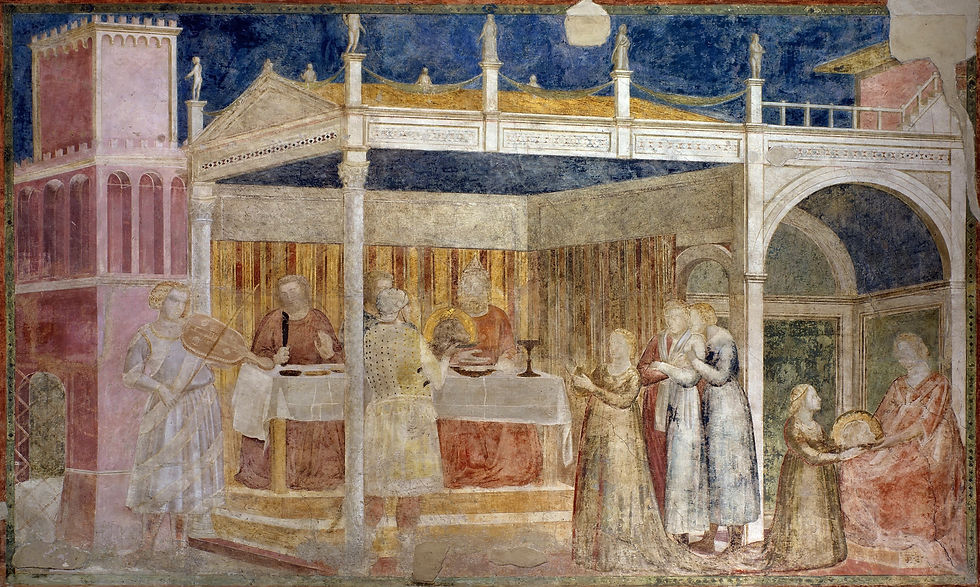At Cana, wine transforms a wedding into a divine feast

THE MARRIAGE AT CANA
Paolo Veronese (1528-1588)
1562-1563
Musée du Louvre, Paris
Veronese sets the scene with a mixture of profane and sacred elements. Religious symbols presaging the Passion of the Christ are placed beside 16th-century gold and silver tableware. The furniture, table, ewers, cups and crystal vases reveal the splendor of the feast. Every guest at the table has his own place setting, consisting of a napkin, forks and a trencher. The artist has missed no detail of the double reading; while a servant carves the meat – symbol of the mystical body of Christ – at the centre of the composition, boxes of quinces – symbols of marriage – are served to the guests as a dessert.
Veronese puts together a veritable mise en scene. The theme allows him to create a stage-like background setting for his characters. The upper half of the composition shows a white-clouded sky, while the lower part plays host to the crowd. The fluted Corinthian columns would have evoked the contemporary constructions of the architect Palladio. The painter has chosen precious pigments imported from the Orient by Venetian merchants: dark yellows, bright reds and lapis lazuli, used in large quantities for the sky and draperies. These colors play a major role in the interpretation of the painting because, by their contrasts, they help to distinguish individual characters (Source: Musée du Louvre).
Veronese represents a Biblical scene in the guise of a Venetian feast, mixing Biblical and contemporary figures. One can even recognize some of Europe’s greatest rulers: Francois I, King of France; the Ottoman Sultan Soliman II the Magnificent; Queen Mary of England. There are also various lords and ladies, whose opulent beauty sets them apart: Eleanor of Austria, Alphonse d’Avalos, the Cardinals Bernard Navagero and Charles de Lorraine Titian, Bassano and even Veronese himself are among the musicians, with Pierre l’Arétin as master of ceremonies.

THE MARRIAGE FEAST AT CANA Romanesque painter, 1130s Wooden ceiling, detail – St Martin Church, Zillis, Graubünden, Switzerland

THE MARRIAGE AT CANA Jacopo Torriti, 1290s - Fresco, Upper Church, San Francesco, Assisi, Italy
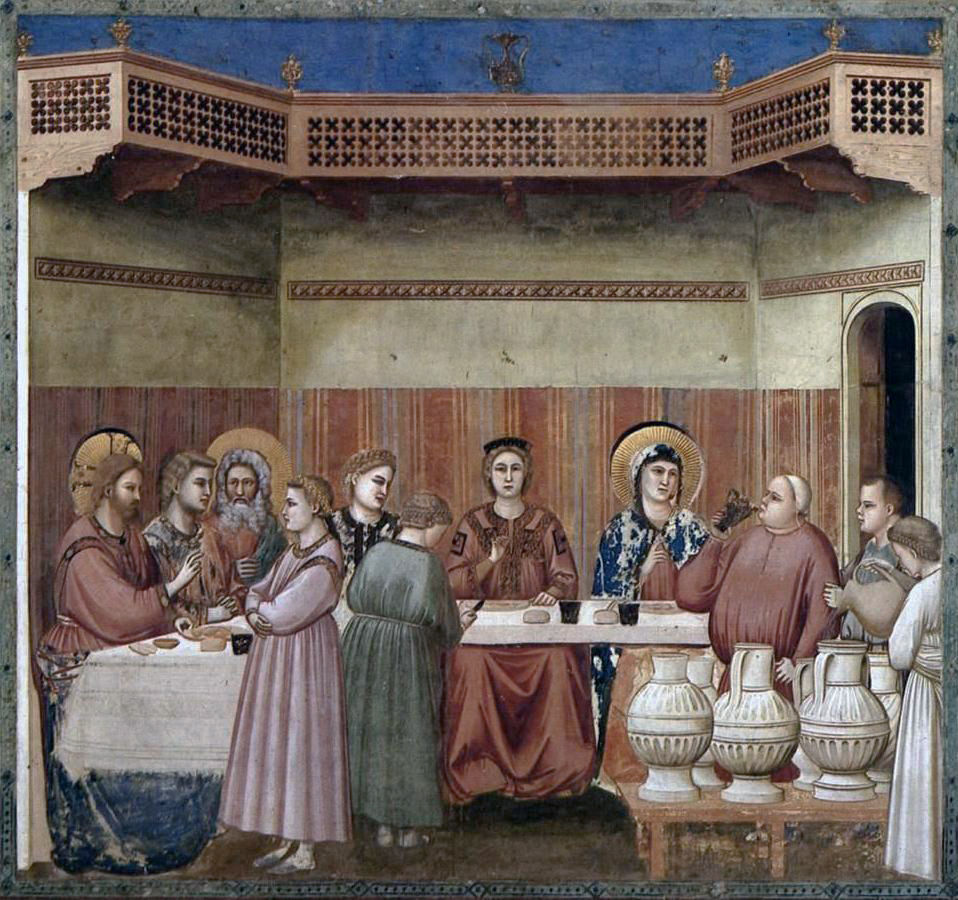
No. 24 SCENES FROM THE LIFE OF CHRIST: 8. MARRIAGE AT CANA Giotto di Bondone, 1304/06 - Fresco (after restor.), Cappella Scrovegni, Padua, Italy

MARRIAGE FEAST AT CANA Hieronymus Bosch ca. 1475/80 - Museum Boijmans Van Beuningen, Rotterdam, The Netherlands

THE WEDDING AT CANA Michael Pacher, 1481, Altar piece St. Wolfgang Church, St. Wolfgang im Salzkammergut, Upper Austria

THE MARRIAGE FEAST AT CANA Juan de Flandes, ca. 1500/04 - Metropolitan Museum of Art, New York
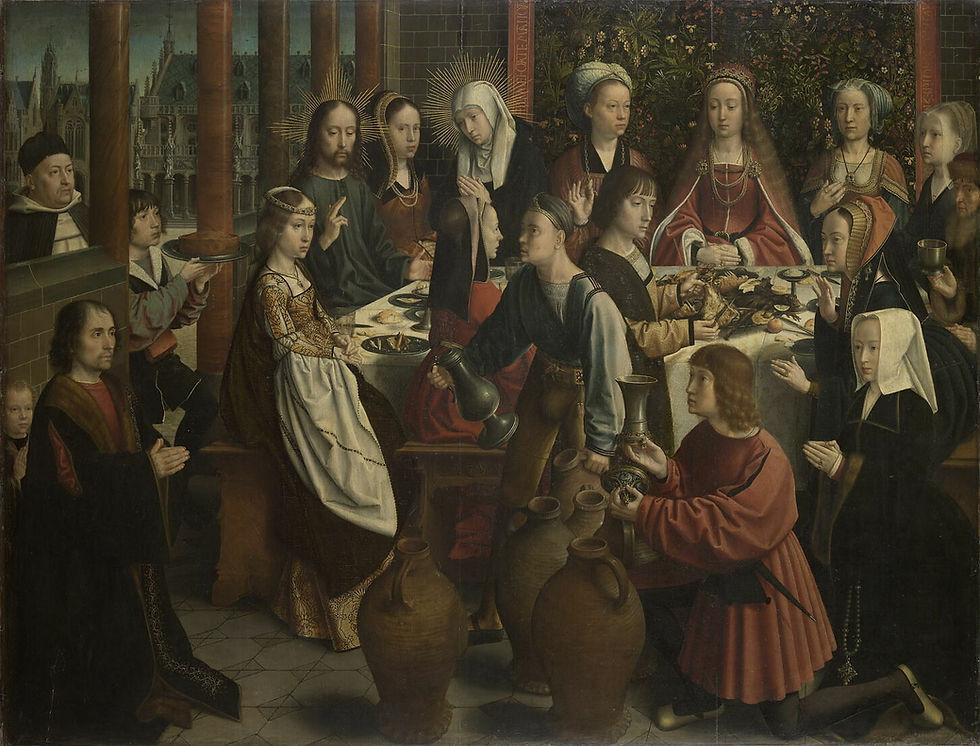
THE MARRIAGE AT CANA Gerard David, ca. 1500 - Musée du Louvre, Paris
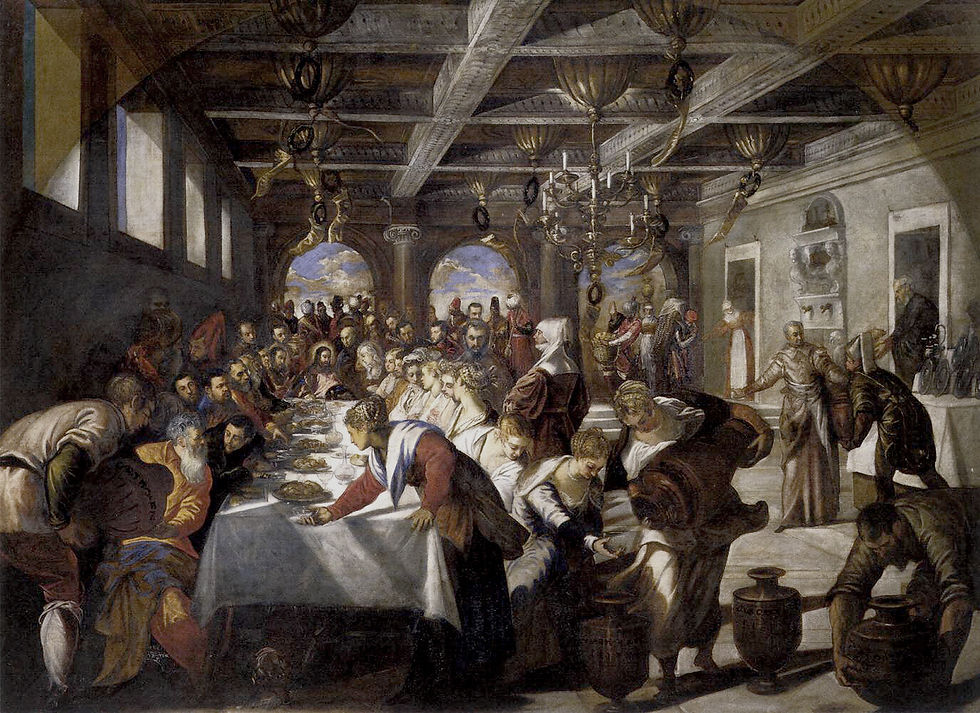
MARRIAGE AT CANA Tintoretto, 1561 - Santa Maria della Salute, Venice, Italy

MARRIAGE AT CANA Giorgio Vasari, 1566 - Fine Arts Museum, Budapest, Hungary

THE MARRIAGE AT CANA Maarten de Vos, 1596/97 - O.-L. Vrouwekathedraal, Antwerp, Belgium

THE WEDDING AT CANA Frans Francken the Younger, ca. 1630/32 - Nationalmuseum, Stockholm, Sweden

THE WEDDING FEAST AT CANA Follower of Frans Francken the Younger Ist half of the 17th century- Private collection

THE WEDDING AT CANA Jan Cossiers, 1640/60 - Sint-Waldetrudiskerk, Herentals, Belgium
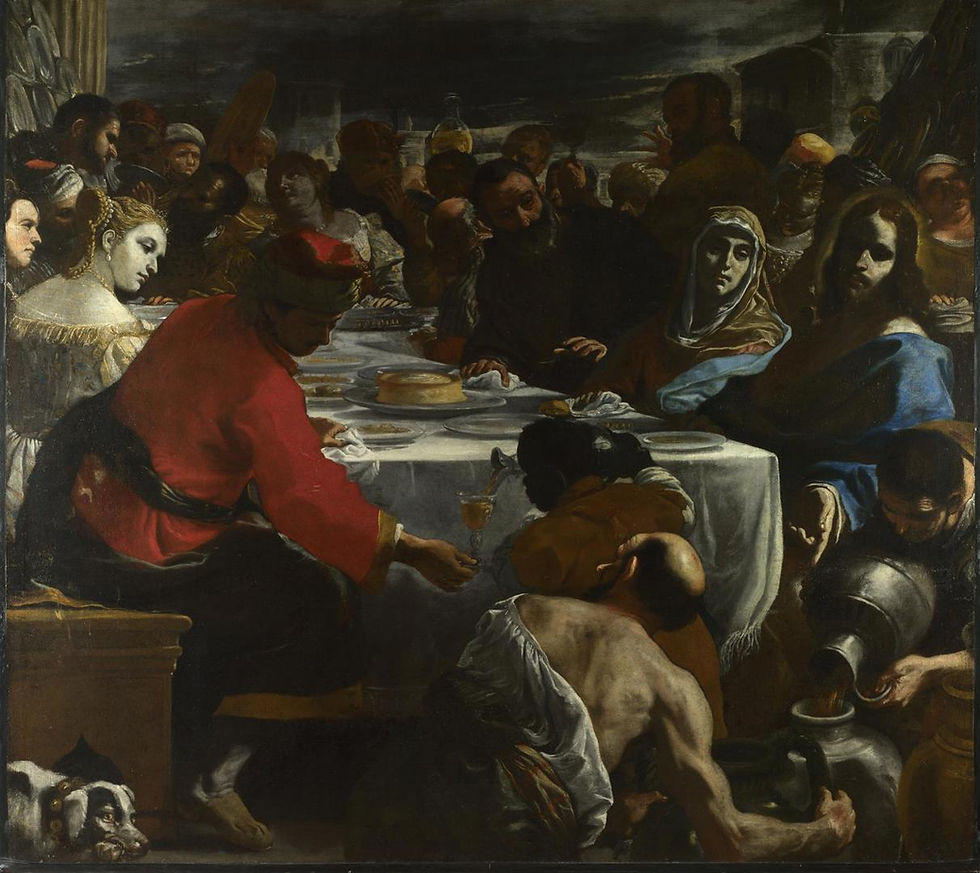
THE MARRIAGE AT CANA Mattia Preti, ca. 1655/60 - National Gallery, London

MARRIAGE AT CANA Jan Steen, 1676 - Norton Simon Museum, Pasadena, CA, United States

THE WEDDING FEAST AT CANA Julius Schnorr von Carolsfeld, 1819 - Kunsthalle, Hamburg, Germany

THE MARRIAGE AT CANA OF GALILEE Adelaide Ironside, 1861/63 - Art Gallery of New South Wales, Sydney, Australia

THE MARRIAGE AT CANA Winifred Knights 1923 - Museum of New Zealand Te Papa Tongarewa, Wellington, New Zealand
> Click on the icons for a closer look at the artworks
Bible text: New Testament, John 2:1-11
"On the third day there was a wedding in Cana of Galilee, and the mother of Jesus was there. Now both Jesus and His disciples were invited to the wedding. And when they ran out of wine, the mother of Jesus said to Him, ‘They have no wine.’ Jesus said to her, ‘Woman, what does your concern have to do with Me? My hour has not yet come.’ His mother said to the servants, ‘Whatever He says to you, do it.’ Now there were set there six waterpots of stone, according to the manner of purification of the Jews, containing twenty or thirty gallons apiece. Jesus said to them, ‘Fill the waterpots with water.’ And they filled them up to the brim. And He said to them, ‘Draw some out now, and take it to the master of the feast.’ And they took it. When the master of the feast had tasted the water that was made wine, and did not know where it came from (but the servants who had drawn the water knew), the master of the feast called the bridegroom. And he said to him, ‘Every man at the beginning sets out the good wine, and when the guests have well drunk, then the inferior. You have kept the good wine until now!’ This beginning of signs Jesus did in Cana of Galilee, and manifested His glory; and His disciples believed in Him."
APPEARANCES CAN BE DECEIVING

MARRIAGE AT CANA
Jan Cornelisz Vermeyen
ca. 1530-32
Rijksmuseum, Amsterdam, The Netherlands
Le titre de cette oeuvre peut paraître trompeur : contrairement à l'habitude, les vases remplis que cite la Bible ne sont pas représentés. La scène décrite ici précède celle du miracle proprement dit. Selon une tradition de la fin du Moyen Âge, les noces de Cana célébraient le mariage de Jean l'Évangéliste et de Marie-Madeleine.
Au centre, derrière la table, Jean imberbe, et son épouse, avec les apôtres Pierre et André à leur gauche, au moment où le repas est servi. Au premier plan, la Vierge Marie se tourne vers sa droite et saisit l'épaule de la servante qui lui dit qu'il n'y a pas de vin. « Chaque tête est une aventure de formes surgissant de l’obscurité, et si jamais une peinture a été construite de l’obscurité à la lumière, c’est bien celle-ci » (Josua Bruyn).
GALLERIES THE BLOOD OF CHRIST IN THE NEW TESTAMENT AND CHRISTIAN ICONOGRAPHY



